In the burgeoning world of electric vehicles, the BYD Atto 3 and Skoda Elroq stand out as compelling options for those seeking an electric SUV. Both vehicles boast impressive specifications, cutting-edge technologies, and a focus on sustainability. This article delves into how these two models stack up against each other in key areas such as performance, space, and technological innovations.
BYD Atto 3 vs Skoda Elroq – Differences & prices compared
Two cars, one duel: BYD Atto 3 meets Skoda Elroq.
Which one wins in performance, efficiency and value for money? Find out now!
Performance and Powertrain
The BYD Atto 3 is powered by a 150 kW electric motor, translating to 204 HP, coupled with a front-wheel drive layout. With an acceleration time of 0-100 km/h in just 7.3 seconds, it offers decent performance suited for both city driving and highway travels. The Atto 3 achieves a maximum speed of 160 km/h, which is competitive within its class.
On the other hand, the Skoda Elroq presents a more diverse powertrain lineup with choices ranging from a 125 kW (170 HP) motor to a more robust 210 kW (285 HP) variant. The Elroq also boasts superior torque figures, especially with the higher-powered option generating 545 Nm. Although its entry-level model accelerates from 0-100 km/h in 9 seconds, the sportier version cuts that time to a swift 6.6 seconds, demonstrating impressive agility that rivals some performance-oriented EVs.
Electric Efficiency and Range
When considering electric efficiency, the BYD Atto 3 is quite commendable with an energy consumption figure of just 16 kWh/100 km and an electric range of 420 km. This efficient design makes it a practical choice for urban and suburban drivers, ensuring fewer trips to the charging station.
The Skoda Elroq, however, offers more options in terms of battery capacity, with choices between 52 kWh and 77 kWh. The range can extend from 375 km for the lower capacity model up to an impressive 580 km for the larger one. Skoda’s commitment to efficiency is apparent, as the vehicle achieves consumption rates as low as 15.2 kWh/100 km on its best-performing variants.
Space and Dimensions
In terms of size, the BYD Atto 3 measures 4455 mm in length, 1875 mm in width, and 1615 mm in height, offering a generous trunk capacity of 440 liters. This space makes it ideal for families or those needing extra room for gear and luggage.
The Skoda Elroq is slightly larger at 4488 mm in length and 1884 mm in width, alongside a height of 1625 mm. Notably, it features a larger trunk with a capacity of 470 liters. This additional space can be a crucial factor for buyers who prioritize cargo utility.
Technological Innovations
Both vehicles feature advanced technological integrations that enhance the driving experience. The BYD Atto 3 comes equipped with a modern infotainment system that includes a large touchscreen interface, smartphone connectivity, and various safety features that have become standard in newer EVs.
The Skoda Elroq elevates the technological game with its innovative driver-assistance systems, high-definition displays, and options for enhanced connectivity features that communicate with smart devices. Skoda integrates advanced features that allow for over-the-air updates, ensuring that the vehicle remains up-to-date with the latest software improvements.
Conclusion - Which is Right for You?
The BYD Atto 3 and Skoda Elroq present two appealing options in the electric SUV market, each with distinct advantages. The Atto 3 is a solid choice for drivers seeking efficiency and practicality without compromising on performance. In contrast, the Elroq provides a broader range of options, exceptional torque, and state-of-the-art technology for a superior driving experience.
As consumer preferences continue to evolve, both vehicles underscore the exciting direction of electric mobility, catering to diverse needs and preferences in the automotive landscape.
Video - Skoda Elroq
Here’s where it gets real: The technical differences in detail
Costs and Efficiency:
Price and efficiency are key factors when choosing a car – and this is often where the real differences emerge.
Skoda Elroq has a slightly advantage in terms of price – it starts at 29100 £, while the BYD Atto 3 costs 33400 £. That’s a price difference of around 4363 £.
In terms of energy consumption, the advantage goes to the Skoda Elroq: with 15.20 kWh per 100 km, it’s minimal more efficient than the BYD Atto 3 with 16 kWh. That’s a difference of about 0.80 kWh.
As for range, the Skoda Elroq performs distinct better – achieving up to 580 km, about 160 km more than the BYD Atto 3.
Engine and Performance:
Power, torque and acceleration say a lot about how a car feels on the road. This is where you see which model delivers more driving dynamics.
When it comes to engine power, the Skoda Elroq has a noticeable edge – offering 340 HP compared to 204 HP. That’s roughly 136 HP more horsepower.
In acceleration from 0 to 100 km/h, the Skoda Elroq is noticeable quicker – completing the sprint in 5.40 s, while the BYD Atto 3 takes 7.30 s. That’s about 1.90 s faster.
In terms of top speed, the Skoda Elroq performs somewhat better – reaching 180 km/h, while the BYD Atto 3 tops out at 160 km/h. The difference is around 20 km/h.
There’s also a difference in torque: Skoda Elroq pulls convincingly stronger with 679 Nm compared to 310 Nm. That’s about 369 Nm difference.
Space and Everyday Use:
Cabin size, boot volume and payload all play a role in everyday practicality. Here, comfort and flexibility make the difference.
Both vehicles offer seating for 5 people.
In curb weight, BYD Atto 3 is hardly perceptible lighter – 1825 kg compared to 1949 kg. The difference is around 124 kg.
In terms of boot space, the Skoda Elroq offers slight more room – 470 L compared to 440 L. That’s a difference of about 30 L.
In maximum load capacity, the Skoda Elroq performs to a small extent better – up to 1580 L, which is about 242 L more than the BYD Atto 3.
When it comes to payload, Skoda Elroq distinct takes the win – 531 kg compared to 335 kg. That’s a difference of about 196 kg.
Who wins the race?
The Skoda Elroq proves to be dominates this comparison and therefore becomes our DriveDuel Champion!
Skoda Elroq is the better all-rounder in this comparison.
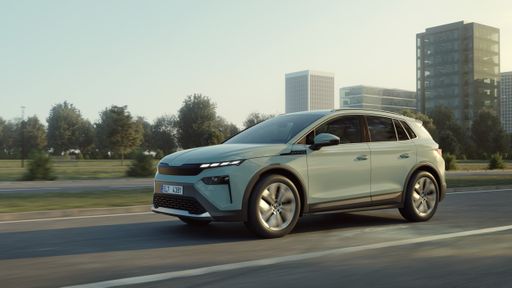 @ Škoda Auto a.s. / Škoda Storyboard
@ Škoda Auto a.s. / Škoda Storyboard
Skoda Elroq
BYD Atto 3
The BYD Atto 3 makes a significant impression with its sleek design and modern aesthetics, embodying a sense of innovation and style. Its interior combines comfort and functionality, featuring high-quality materials and cutting-edge technology to enhance the driving experience. As an electric vehicle, it promises an eco-friendly performance, catering to those who are both environmentally conscious and passionate about automotive advancements.
details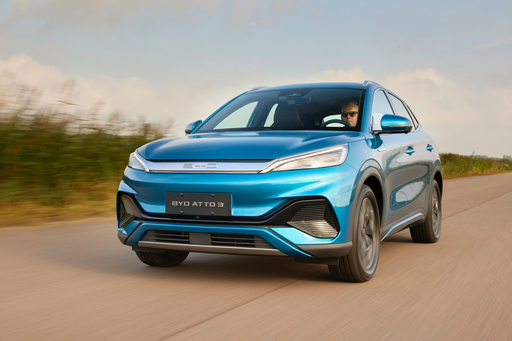 @ BYD Auto / BYD Global Media
@ BYD Auto / BYD Global Media
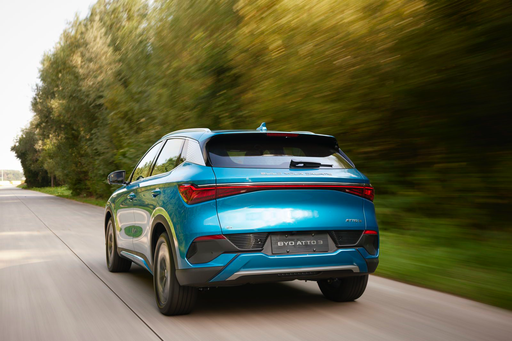 @ BYD Auto / BYD Global Media
@ BYD Auto / BYD Global Media
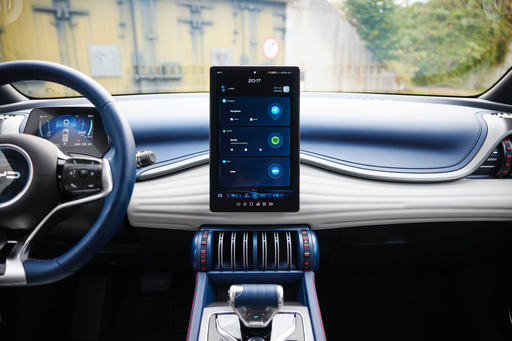 @ BYD Auto / BYD Global Media
@ BYD Auto / BYD Global Media
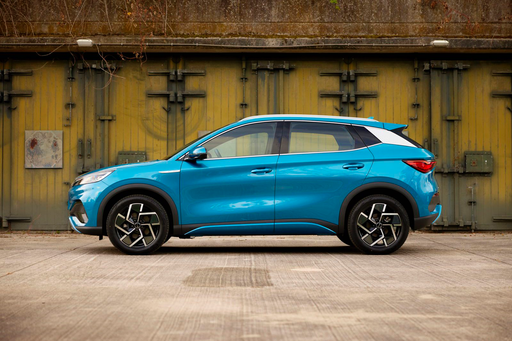 @ BYD Auto / BYD Global Media
@ BYD Auto / BYD Global Media
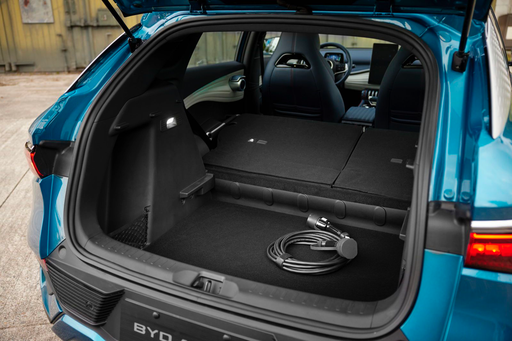 @ BYD Auto / BYD Global Media
@ BYD Auto / BYD Global Media
Skoda Elroq
The Skoda Elroq is a cleverly packaged family SUV that mixes roomy practicality with sharp, modern looks, making it an easy pick for buyers who prefer common sense over flash. On the road it's composed and user-friendly, with thoughtful interior details that turn everyday driving into something pleasantly efficient — a sensible companion with a wink.
details @ Škoda Auto a.s. / Škoda Storyboard
@ Škoda Auto a.s. / Škoda Storyboard
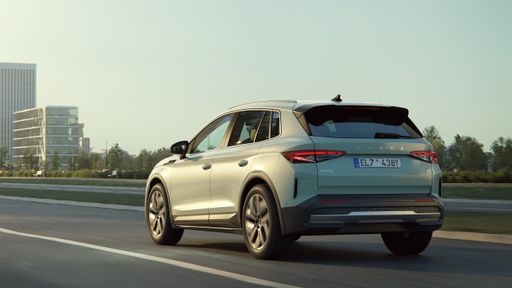 @ Škoda Auto a.s. / Škoda Storyboard
@ Škoda Auto a.s. / Škoda Storyboard
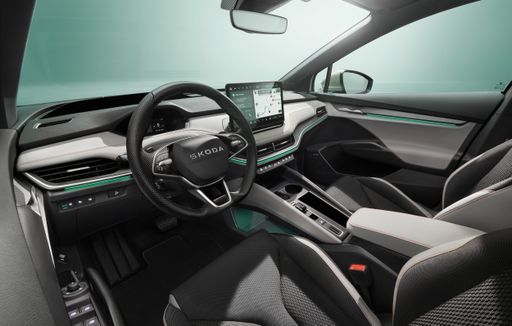 @ Škoda Auto a.s. / Škoda Storyboard
@ Škoda Auto a.s. / Škoda Storyboard
 @ BYD Auto / BYD Global Media
@ BYD Auto / BYD Global Media
|
 @ Škoda Auto a.s. / Škoda Storyboard
@ Škoda Auto a.s. / Škoda Storyboard
|
|
|
|
Costs and Consumption |
|
|---|---|
|
Price
33400 - 35100 £
|
Price
29100 - 45500 £
|
|
Consumption L/100km
-
|
Consumption L/100km
-
|
|
Consumption kWh/100km
16 kWh
|
Consumption kWh/100km
15.2 - 16.5 kWh
|
|
Electric Range
420 km
|
Electric Range
377 - 580 km
|
|
Battery Capacity
-
|
Battery Capacity
52 - 79 kWh
|
|
co2
0 g/km
|
co2
0 g/km
|
|
Fuel tank capacity
-
|
Fuel tank capacity
-
|
Dimensions and Body |
|
|---|---|
|
Body Type
SUV
|
Body Type
SUV
|
|
Seats
5
|
Seats
5
|
|
Doors
5
|
Doors
5
|
|
Curb weight
1825 kg
|
Curb weight
1949 - 2268 kg
|
|
Trunk capacity
440 L
|
Trunk capacity
470 L
|
|
Length
4455 mm
|
Length
4488 mm
|
|
Width
1875 mm
|
Width
1884 mm
|
|
Height
1615 mm
|
Height
1608 - 1625 mm
|
|
Max trunk capacity
1338 L
|
Max trunk capacity
1580 L
|
|
Payload
335 kg
|
Payload
470 - 531 kg
|
Engine and Performance |
|
|---|---|
|
Engine Type
Electric
|
Engine Type
Electric
|
|
Transmission
Automatic
|
Transmission
Automatic
|
|
Transmission Detail
Reduction Gearbox
|
Transmission Detail
Reduction Gearbox
|
|
Drive Type
Front-Wheel Drive
|
Drive Type
Rear-Wheel Drive, All-Wheel Drive
|
|
Power HP
204 HP
|
Power HP
170 - 340 HP
|
|
Acceleration 0-100km/h
7.30 s
|
Acceleration 0-100km/h
5.4 - 9 s
|
|
Max Speed
160 km/h
|
Max Speed
160 - 180 km/h
|
|
Torque
310 Nm
|
Torque
310 - 679 Nm
|
|
Number of Cylinders
-
|
Number of Cylinders
-
|
|
Power kW
150 kW
|
Power kW
125 - 250 kW
|
|
Engine capacity
-
|
Engine capacity
-
|
General |
|
|---|---|
|
Model Year
2023
|
Model Year
2025
|
|
CO2 Efficiency Class
A
|
CO2 Efficiency Class
A
|
|
Brand
BYD
|
Brand
Skoda
|
What drive types are available for the BYD Atto 3?
The BYD Atto 3 is available as Front-Wheel Drive.
The prices and data displayed are estimates based on German list prices and may vary by country. This information is not legally binding.
